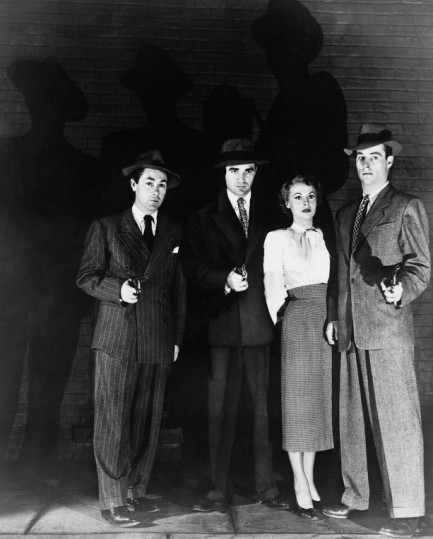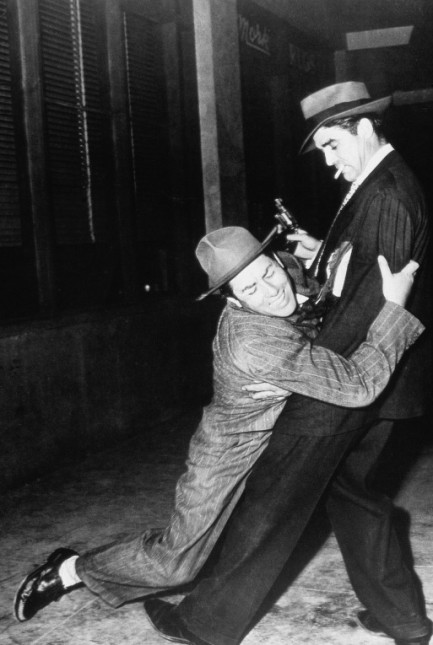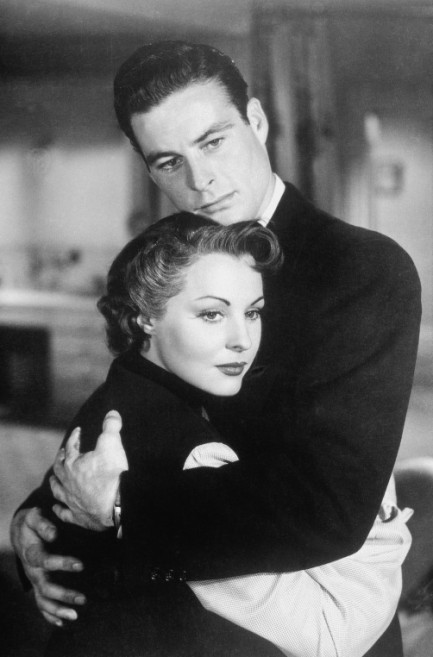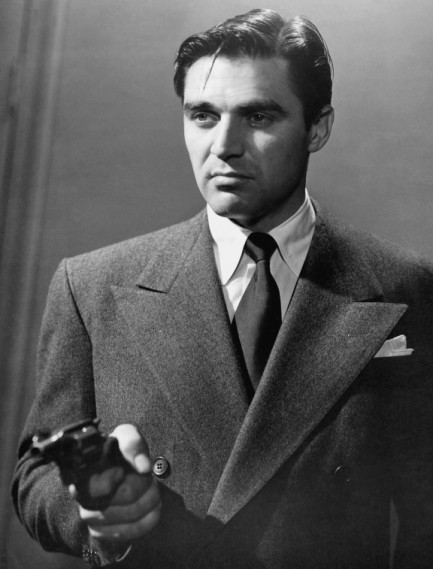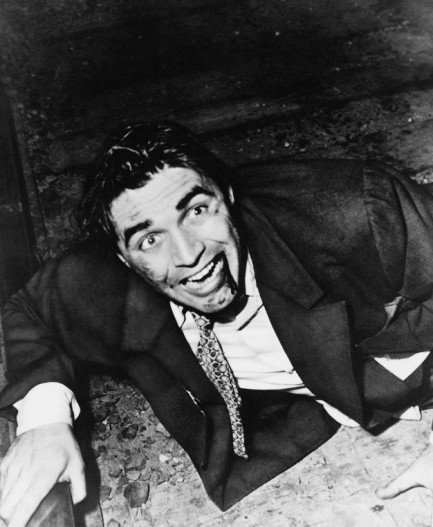| Vintage Pulp | Dec 4 2013 |


Though we can’t find much online about the making of the 1950 b-budget film noir Highway 301, we have a suspicion what happened during its production. The studio holding the purse strings, Warner Bros., had a look at the rough cut and said there’s no way we’re putting out a movie this intense. How intense is it? Influential New York Times critic Bosley Crowther called it “a straight exercise in low sadism.” So what does a studio do when it has on its hands a movie it thinks is likely to bad vibe audiences right out of the cinema? Simple—tell the audiences before the movie starts how it’s going to end. Get three sitting state governors—W. Kerr Scott of North Carolina, John S. Battle of Virginia, and William P. Lane, Jr. of Maryland—to announce in a prologue that crime does not pay, and that every member of the Tri-State Gang depicted in the movie ended up dead, except for one, who ended up in prison. Was Warner Bros. really responsible for such a blatant mutilation of Highway 301? It’s a very good bet, simply because a screenwriter can’t write a script that counts on the participation of three state governors. But for Jack Warner, well, all it would have taken was a phone call to each.
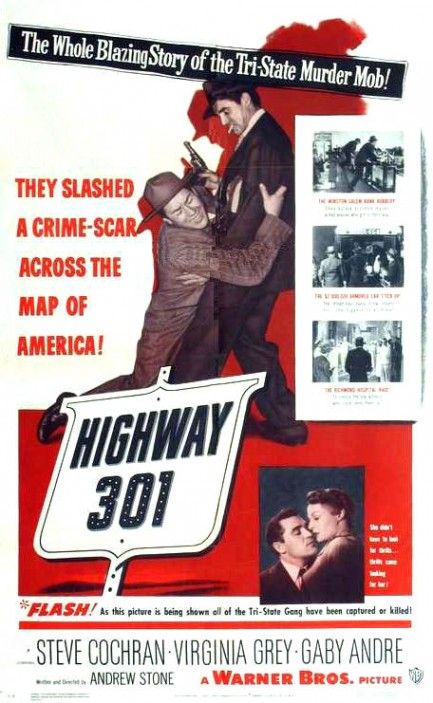 determine the fortunes and misfortunes of the characters, and which gnaw at the nerves of an audience that knows which choice is right but can only watch events unfold. At the center of it all is Steve Cochran as the gang’s murderous leader, a guy who solves every problem with a gun. The supporting cast includes Virginia Grey, Gaby Andre, and Robert Webber, and all are good in their roles.
determine the fortunes and misfortunes of the characters, and which gnaw at the nerves of an audience that knows which choice is right but can only watch events unfold. At the center of it all is Steve Cochran as the gang’s murderous leader, a guy who solves every problem with a gun. The supporting cast includes Virginia Grey, Gaby Andre, and Robert Webber, and all are good in their roles.Writer/director Andrew L. Stone deserves a lot of credit for putting this together. He was an experienced hand at this point, but never before had he created something so innovative. Highway 301 ends on a down note with more moralizing, but sandwiched in between is a highly recommendable drama. Flawed, yes, but only due to the intrusion of front office types, we suspect. A re-release without the moral parentheses and intermittent narration would elevate this to classic status. The poster at top is classic in its own right. It was painted by someone who signed it Aziz, and the Arabic script in the lower right corner confirms it was made for release in the Middle East or North Africa, most likely Egypt, but don’t quote us on that.
